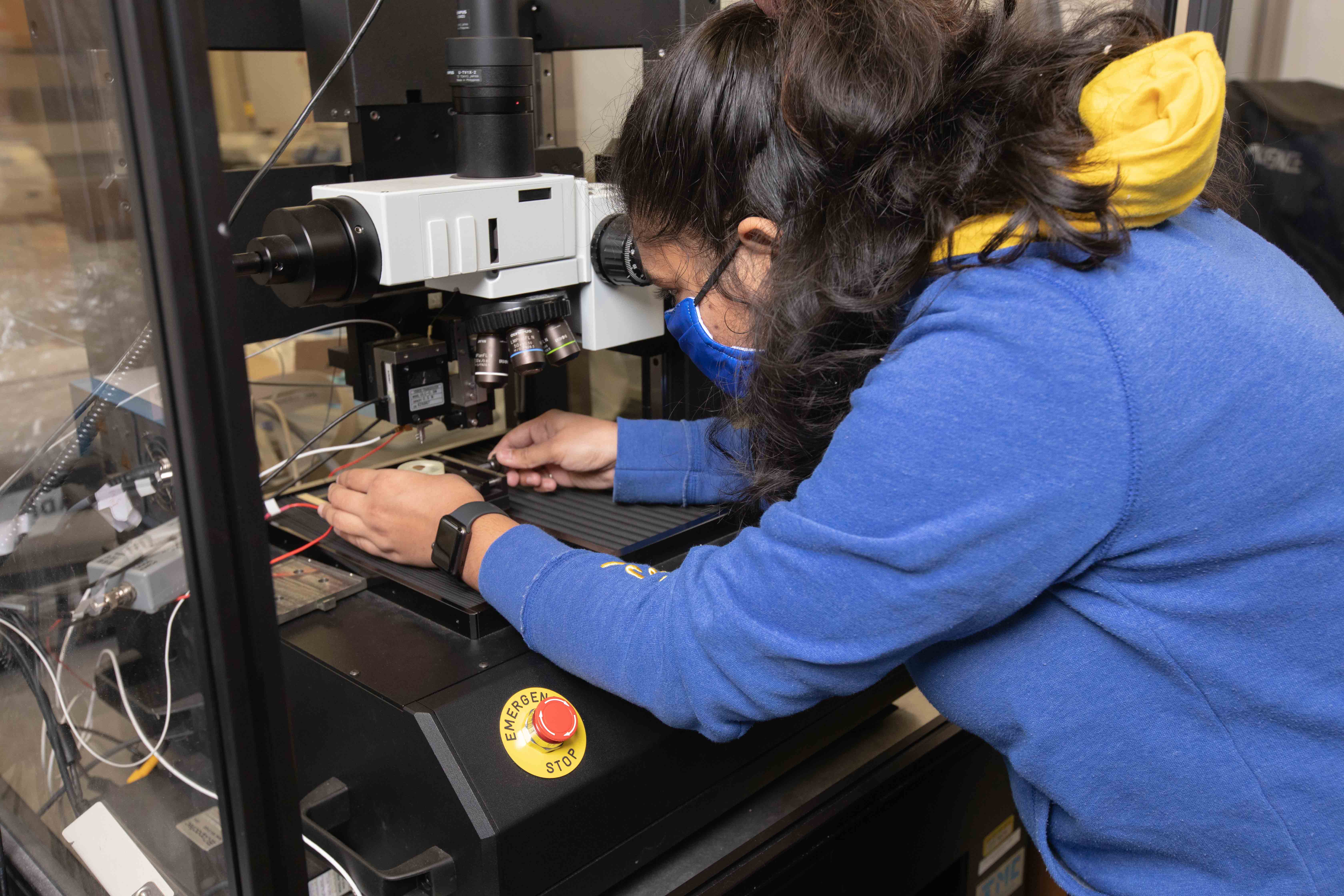Associate professor Todd Letcher and assistant professor Anamika Prasad of the Department of Mechanical Engineering are determining the material properties of a copper-based printable alloy called GRCop-42, testing samples taken from 3D parts printed using a new additive manufacturing technique.
Additive manufacturing, also commonly known as 3D printing, is different from traditional manufacturing methods in that it builds a part one layer at a time. This manufacturing technique makes it possible to cost effectively create intricate geometries, such as those needed to dissipate heat, explained Letcher, whose research focuses on 3D printing and materials characterization.
Prasad, whose research focuses on nanomechanics of engineering and biomaterials, said, “This is an excellent opportunity to utilize the equipment at the Materials Testing and Evaluation Laboratory to train our students to conduct material testing on additively manufactured materials and thereby contribute to the development of a highly-educated, skilled workforce in South Dakota.”
The agreement between NASA and SDSU is supported by a NASA Established Program to Stimulate Competitive Research, EPSCoR, Rapid Response Research grant. EPSCoR is designed to establish partnerships with government, higher education and industry to develop and improve research infrastructure in areas of importance to the NASA mission. South Dakota is one of 28 states participating in the NASA EPSCoR program.
The SDSU researchers have significant experience testing additively manufactured parts made with polymers, or plastics, but this is their first experience with evaluating parts made with copper-based alloys, Letcher explained. “The parts we are testing were manufactured using laser powder-based directed energy deposition.”
This additive manufacturing process involves injecting metal powder into a laser-heated pool of molten metal, or melt pool. The nozzle and laser optics are integrated into a build-head attached to a robot that moves in a pattern determined by a computer building one layer at a time.
The goal of NASA’s research is to evaluate new manufacturing techniques to fabricate components more rapidly, according to Paul Gradl, Senior Propulsion Engineer at the NASA’s Marshall Space Flight Center in Huntsville, Alabama. “Laser (blown) powder directed energy deposition additive manufacturing allows us to create very large-scale components with complex internal features that were not previously possible. We’re able to significantly reduce the time and the cost associated with the fabrication of channel-cooled nozzles and other critical rocket components.”
NASA has provided the GRCop-42 parts manufactured by an industry partner to the SDSU researchers with specific instructions about the types of testing that should be done to determine the mechanical properties and microstructure of the additively manufactured material, Prasad said. Small changes in manufacturing parameters can impact the microstructure and properties of the manufactured parts. Two graduate students are also working on the project.
The researchers have examined surface roughness using a laser scanning microscope, hardness using nanoindentation and residual stresses using x-ray diffraction. Using the scanning electron microscope in the Department of Electrical Engineering and Computer Science, the researchers examined the microstructure of the material. They also performed tensile testing of various material specimens.
“We are contributing to a database on the material properties of GRCop-42 manufacturing using this specific process,” Prasad said. Results from the project’s first year were presented at the 2020 International Mechanical Engineering Congress and Exposition in November 2020.
The researchers are now performing additional tests on the samples and exploring sample size and cutting methods for low-cycle fatigue testing.



